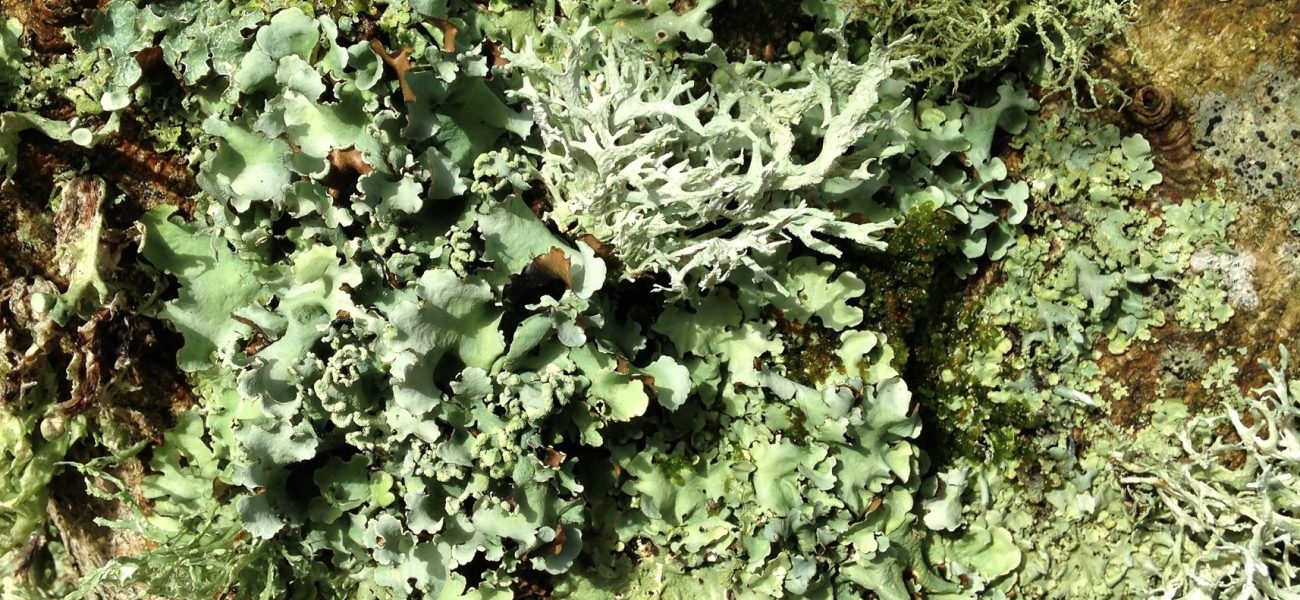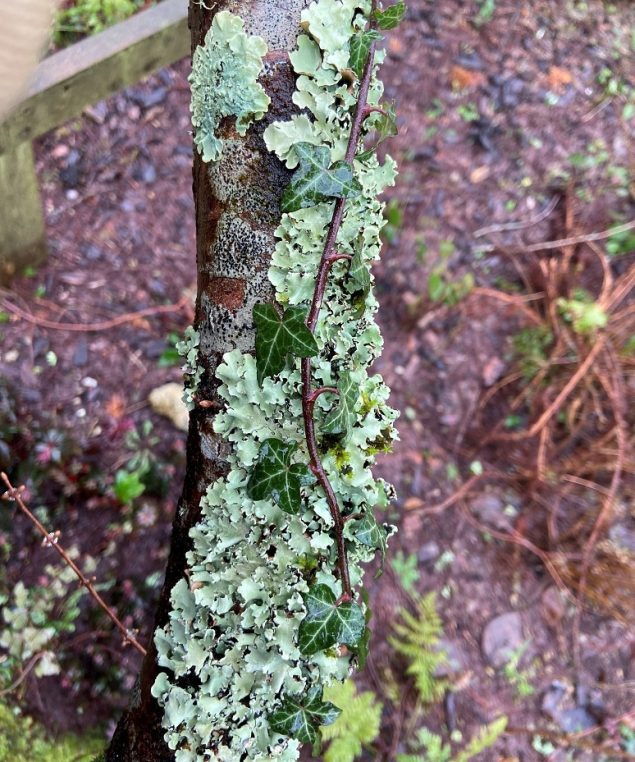
Lichens
Maybe it is the winter light, or the cooler growing conditions, but now is the time lichens show themselves well. We have abundant lichen here at the Nursery, mostly noticeably growing on wood. There is lichen on fences, furniture, and on living trees. We are brought up to believe that lichen only grows in clean air, but this is not strictly true. Some, usually the flat crusty types, are tolerant of sulphur dioxide and nitrogen dioxide, key urban pollutants, and can be seen on city buildings and pavements. However, the forms pictured here do not tolerate pollution and are testament to our lovely clean, fresh air.

Lichens are composed of two (occasionally three) separate organisms combined and living together in a symbiotic relationship in situations where neither single species would be able to survive on its own. Fungi form one half of this partnership providing the structure of the lichen and supplying water and minerals. The second partner is either algae or cyanobacteria which live within the fungus and produce sugar by photosynthesis.
Lichens can be found in almost every part of the planet, from arctic tundra to the driest deserts, from seashores to high mountain ranges, from pristine forest to toxic slag heaps. It is estimated that about 7% of the earth’s surface is covered by lichen and there may be as many as 17,000 species. They are slow growing and long-lived, indeed the world’s oldest living organism may be an Arctic map lichen, dated at 8,600 years old.


Man has used lichen in many ways over the centuries. Though often requiring careful preparation it is a food for humans, and a staple for some animals such as reindeer. It also has medicinal properties and some species contain natural antibiotics.
Lichens are the first organism to colonise a newly exposed rock surface and lichenometry is a recent technique for dating rocks by measuring lichen growth on the surface. Dyes have been made from lichen since ancient times, and Harris tweed was traditionally dyed using lichens. Those of us who remember litmus paper in chemistry lessons probably never knew the red/blue pH indicator was extracted from lichen.



